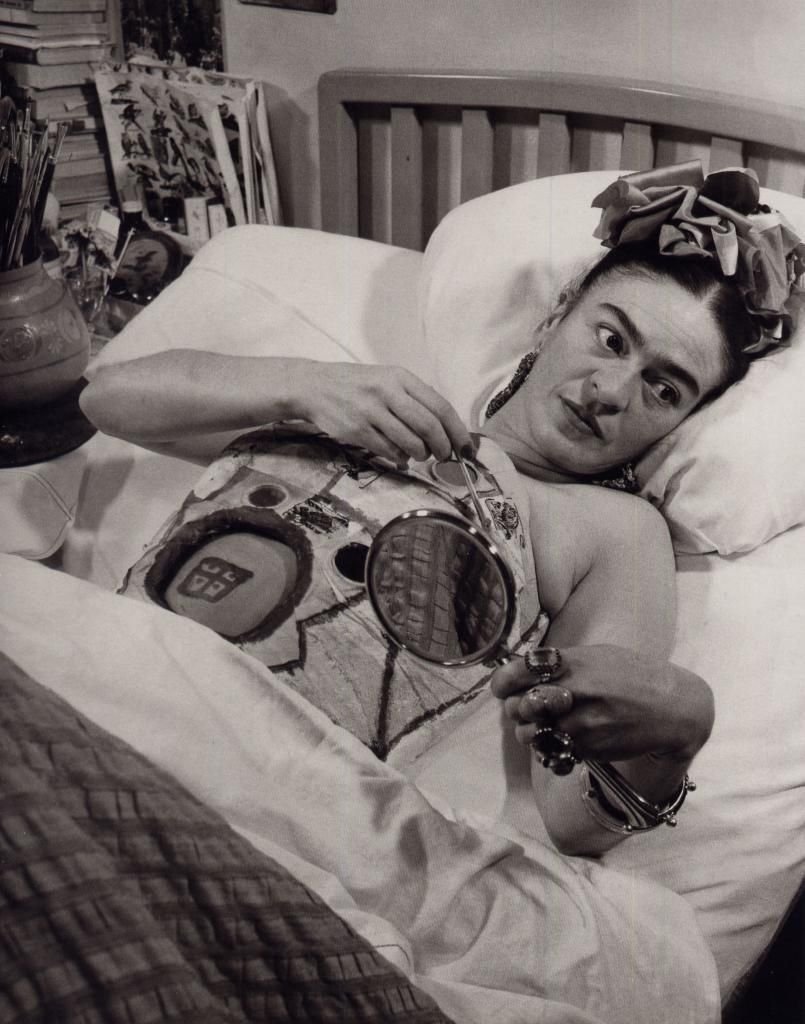LOST AND FOUND: The Hidden Wardrobe of Frida Kahlo
Her personal image was partially constructed through wardrobe: indigenious Mexican embroidered huipil blouses, cotton enagua skirts, fringed rebozo shawls, Aztec beads and traditional Tehuana dresses bearing paint splatters. Almost seventy years after her death, artist Frida Kahlo’s clothing has left an indelible imprint on pop culture, an instantly recognizable look from an iconoclast who informs today’s artists, fashion designers and feminists.
Surprisingly, Kahlo’s garments had been locked away in her Mexico City home, La Casa Azul (the Blue House) for close to fifty years. Kahlo’s husband, the Mexican muralist Diego Rivera, had instructed his good friend Dolores Olmedo that the bathroom containing Kahlo’s intimate effects should stay locked until his death. (In a twist, Olmedo waited until she died, and in 2002, Kahlo’s objects finally saw the light of day).
Despite her colorful style, Kahlo had a tumultuous and painful life. At age six, she contracted polio, leaving her with a shorter right leg and a limp. When she was 18, Kahlo injured her leg again, after a school bus accident left her with bone fractures (it also left her in four poster-bed for many months.) Kahlo had over twenty surgeries, between her spine and right leg, which also resulted in an amputation. Of course, her sufferings are also what made the artist the artist.
Some 300 pieces were uncovered, including plaster casts and back braces covered with leather and metal bars; and fringed platform boots with Chinese dragon motifs (plus a heightened sole for Kahlo’s right foot). The artist famously hand-painted her corsets and casts, effectively turning them into elaborate artworks. Also among the possessions: private diary entries and Kahlo’s letters to artists like Man Ray, Isamu Noguchi and the poet Pablo Neruda. There were also over 6000 photographs, including family portraits, alongside Kahlo’s own snapshots (she learned from her father, a successful photographer, when she was a child). A few years back, the public was able to view these artifacts at London’s V&A and The Brooklyn Museum of Art.
Kahlo was aware of the symbolism of her clothing. We now see how politics, identity and illness informed her art and vice versa. “The Two Fridas” (1939) shows Kahlo wearing both Mexican and European fashions, a nod to her multi-cultural heritage (Kahlo’s mother was Mexican; and her father was German). In her 20s, Kahlo wore a traditional Tehuana wardrobe, plucked from the deep roots of Oaxacan matriarchal society, while trying to mask her disabilities. She selected chunky silver and jade jewelry and headdresses that drew attention to her neck, torso and arms.
Kahlo’s beauty regimen was also unearthed: a red Revlon lipstick, nail polish and ebony eyebrow pencils responsible for her signature monobrow. “On my face, I like the eyebrows and the eyes. Aside from that, I like nothing ... I have the moustache and in general the face of the opposite sex,” Kahlo once quipped.
Like many artists, Kahlo’s story is rooted in adversity and triumph. Her constructed image was about personal expression. She took her sufferings and used them to empower her art and socailist politics. And, long before it was fashionable, she insisted on a powerful and authentic style that refused to conform to one culture or identity. “I am not sick, I am broken. But I am happy to be alive as long as I can paint,” Kahlo said.






